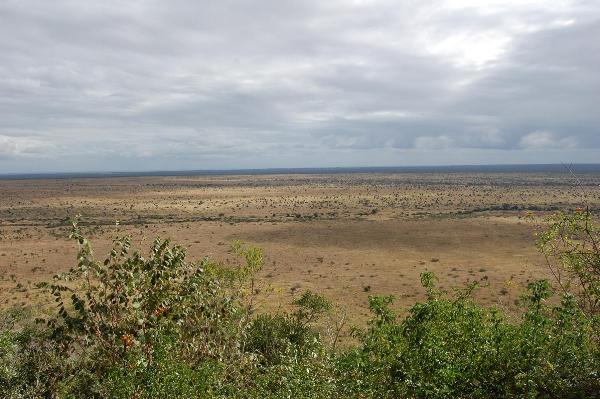
On the basis of the underlying geology, as well as the rainfall, altitude and landform, the Kruger National Park has 16 very distinct ecozones. Soil formation is influenced by the underlying parent rock; trees, shrubs and grasses differ according to soil and climate; and all animal life survives where there is protection; enough food and where they can successfully reproduce. Geology – together with climate – therefore plays a distinct role in the formation of these ecozones each with its own plant and animal communities.
The clay soils of this region, underpinned by basalt, support large concentrations of zebra and wildebeest. The lookout at Nkumbe, 94 metres above the plain, provides one of the finest panoramas in the Park, and herds of zebra and wildebeest can often be seen trekking across the grasslands below. However, it is easy to forget about soil. You have to look down on the ground to see it. Even then, soil may not seem to do very much. But there’s more to soil than you might think. It isn’t just dirt that gets on your shoes. Trees and plants need soil to grow. Very few fruits, vegetables and grains would live without it. Many animals need soil, too. They eat the plants that grow in it. Some animals even live in the soil.
Most soil comes from rocks. Over many years, weather causes rocks to break apart. The pieces get smaller and smaller as time goes on. Soil forms when bits of rock mix with things like dead leaves and dead bugs. Not all soil is the same. Soil comes in many colours. Some soil looks and feels different than other soil. The colour and feel of soil often changes as you dig deeper into the ground. You can learn a lot by seeing and touching soil. In a way, soil is like a secret decoder. Water also affects the colour of soil. Wet soil is usually darker than dry soil. The feel of soil can tell you about its ingredients. Soil contains different amounts of sand, silt and clay. Soil in a forest for example might be gritty, which means more sand.
Remember that it is neither SAFE nor LEGAL to get out of your vehicle at any point in the Park unless specifically authorized to do so.

In order to answer the questions posed below one will have to make comparisons and draw conclusions based on specific observations made. At the given co-ordinates you are high above the plains below and will encounter a certain type of surroundings. By comparison, and contrast, the area that you see below you from the lookout is totally different.
1. How do you think that the clay composition of the plain below has affected the vegetation growth?
2. Describe briefly, in your own words, how clay might be formed.
3. How does the soil look that you walked over from the car park to the lookout and do you think that it might be clay?
4. Post a photograph of yourself with your log – with GPSr – at the signboard at the given co-ordinates to verify you were there - optional.
Please submit your answers to cincolcc(at)gmail.com for verification of your visit to the EarthCache. You may log your visit prior to submission but note that logs that have not been verified will be deleted.
FTF goes to - De Kokopelli's

